Categories
New Blog
Tags
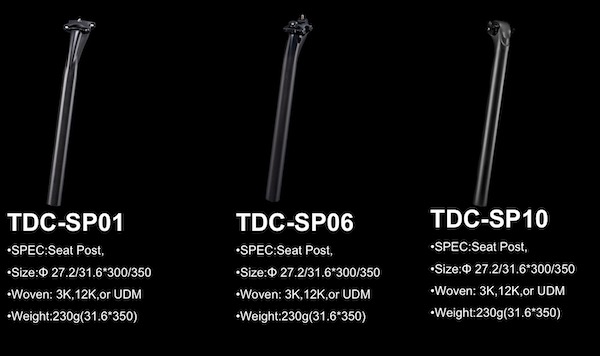
A bicycle seatpost is essentially a tube that connects the bike frame to the bike saddle. Seatposts can also be called a seatpin, saddlepole, saddle pin or saddle pillar. A bike seatpost extends from the bicycle frame and this can be adjusted to suit the needs of the individual. Having the right seatpost is important to ensure you make the most of your ride and can also prevent you from straining your lower back in the long term. This buying guide will guide you how to choose the seatpost.
What is a seatpost?
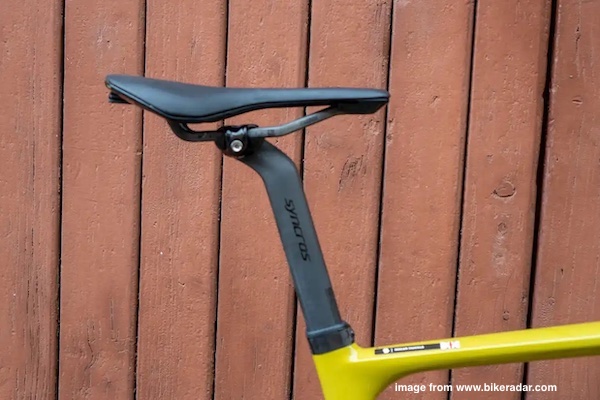
A seatpost has the seemingly simple job of connecting the saddle to the frame. At its top is a head, which attaches to the saddle to hold it in place.At the bottom, the shaft inserts into the top of the bike’s seat tube and is held in place by a seatpost clamp.
A dropper post will allow you to quickly and easily lower your saddle for improved control when you hit technical terrain. In recent years, dropper seatposts have become a must-have item for mountain bikers. Seatpost diameters can vary, but most modern bikes use a diameter of 30.9mm or 31.6mm and there's a great choice of posts to fit these frames.
Seatpost materials
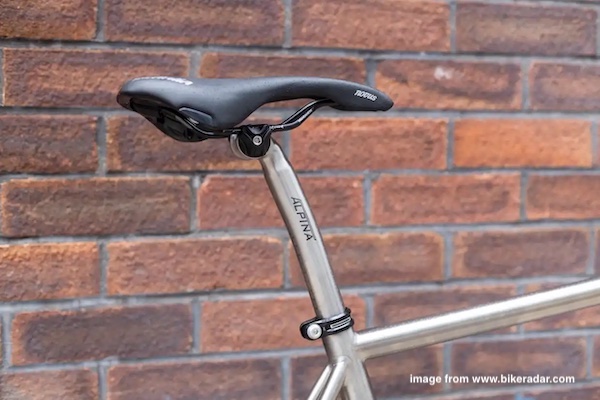
Seatposts are typically made of either aluminium or carbon fibre, although you can also find titanium seatposts.
Aluminium seatposts are usually cheaper, although they’re heavier, while carbon fibre seatposts are a more expensive but lighter option.Carbon fibre seatposts, most commonly found on mid-to-high-end road and gravel bikes, are typically lighter than equivalent aluminium models, and can be more comfortable, too. Lower-priced models will usually have an alloy seatpost.
In contrast, aluminium seatposts are standard on most mountain bikes, because the exposed seatpost length is usually greater and there’s more stress on the post. Weight is less of a concern, too, and you’ll have big mountain bike tyres and suspension to keep things comfortable.
However, most mountain bikes in the mid-range and above now come with a dropper post, which enables you to drop the saddle out of the way on technical terrain.
Titanium seatposts often compete with carbon when it comes to weight, and are comparable in price to a premium carbon post.A titanium post is most likely to be fitted to a titanium bike, although even there carbon seatposts dominate.
Seatpost diameters
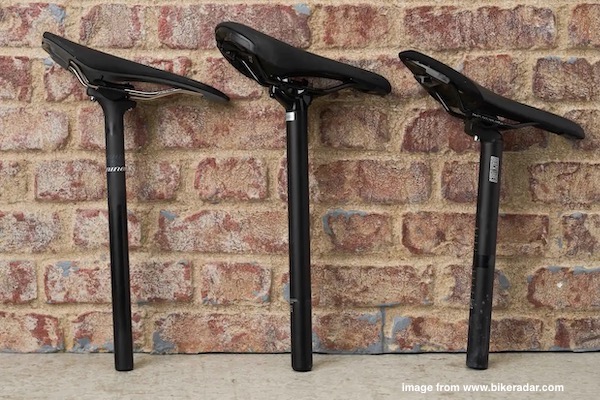
Round seatposts come in several different diameters, to fit in different-sized seat tubes. If you’re changing your seatpost, make sure the post you’re replacing it with is the correct diameter. 27.2mm, 30.9mm and 31.6mm are the most common seatpost diameters, with 34.9mm also emerging as a popular size for mountain bikes.
The most common size on modern road bikes and gravel bikes is 27.2mm. These posts can be found on some MTBs too, although the size is confined mainly to a limited number of cross-country mountain bikes.A narrower post will typically be lighter and can offer improved comfort, because it’s able to flex more easily than a stiffer, oversized post.
A 30.9mm seatpost is often found on mountain bikes seatpost, but not on road bikes.A wider-diameter seatpost offers, in theory, improved durability over an equivalent seatpost in a narrower diameter.Mountain bikes typically have a lower standover height than road bikes, leaving more of the post exposed, so a wider post is preferred to improve strength.
An older standard popular on road bikes, 31.6mm seatposts have mostly been superseded by 27.2mm-diameter posts. They’re still found on some road bikes and many mountain bikes though.
The longer seatpost length of mountain bikes means rigidity and robustness are important, whereas with the shorter seatposts on road bikes, compliance and ride comfort are greater priorities.
This has emerged as a popular seatpost diameter for modern mountain bikes.The wider diameter is often preferred for dropper posts. There’s more space internally for moving parts to be made bigger and more robust, plus there’s the stiffness that comes with the wider tubes to prevent binding.
Seatpost length
Seatpost length ranges anywhere from around 75mm to more than 400mm, though most posts come in lengths between 300mm and 400mm.
Road and gravel bikes tend to have a longer seat tube than mountain bikes, so usually requirer a shorter post of around 300 to 350mm. Mountain bikes typically leave more of the seatpost exposed above the frame, so require a longer post.Ultimately, the amount of seatpost exposed will be determined by the geometry and size of your bike, combined with your ideal saddle height.
Seatpost head
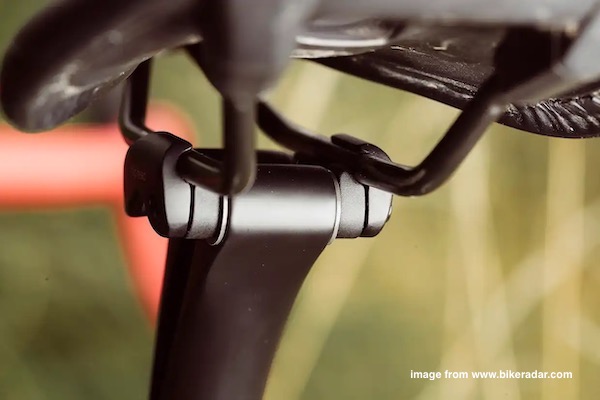
The business end of the seatpost is its head, which has a clamp mechanism to attach it to the saddle rails.It’s usually made of metal, even in a seatpost with a carbon shaft, although some carbon seatposts are one-piece and include a carbon head.Every brand seems to have its own take on the saddle clamp design, which usually includes a bolt at the front of the head and another at the rear, although some have just one bolt.
Most saddles have round rails, whereas some have oval rails. You may need a seatpost with a clamp design that’s deeper to accommodate oval rails.There are varying degrees of complexity in getting the clamp set up and adjusted properly, from slightly awkward to downright infuriating.
It’s the head and clamps that determine the saddle angle and enable you to slide the saddle back and forth to change its position on the bike. Getting this right can have a significant impact on the fit of your bike.
Seatpost setback
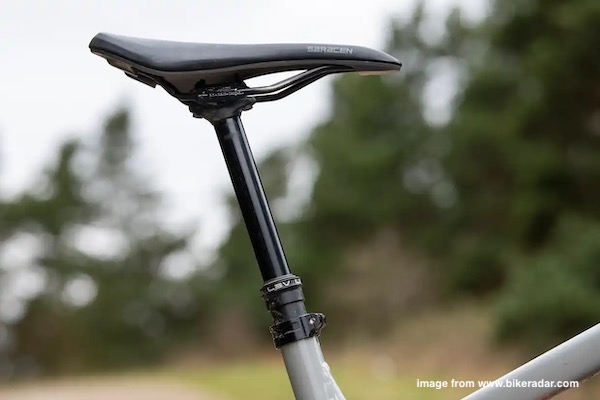
The head on mountain bike seatposts is usually in line with the shaft. In contrast, road bike seatpost heads are often displaced slightly behind the line of the shaft. This is called ‘setback’.
Setback can be anything from zero (an ‘in line’ seatpost) to 25mm, resulting in the saddle being positioned a little further behind an imaginary vertical line drawn from the centre of the bottom bracket.
In recent years, the usual extent of setback has been decreasing, as performance-minded road riders adopt a more time-trial like ride position that places them more over the bottom bracket, so you’ll often see zero-setback seatposts as an option.
However, UCI rules state that in sanctioned races the nose of the saddle must be set back by at least 5cm from the bottom bracket. That in turn has led to a proliferation of short-nosed saddles on road bikes, which, once again, enable riders to adopt a more aggressive position.
Suspension seatposts
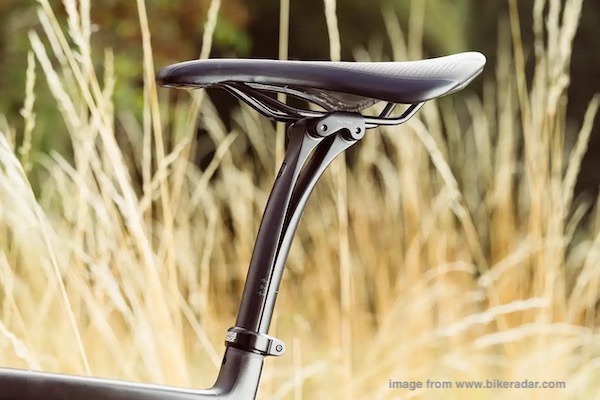
If you’re really not satisfied with the comfort of your bike, a suspension seatpost may help.There’s a range of different designs, which all add some extra movement at the saddle, with varying levels of mechanical complexity.Often, a suspension seatpost will include features such as elastomers or springs, which can make it quite heavy.
Dropper seatposts
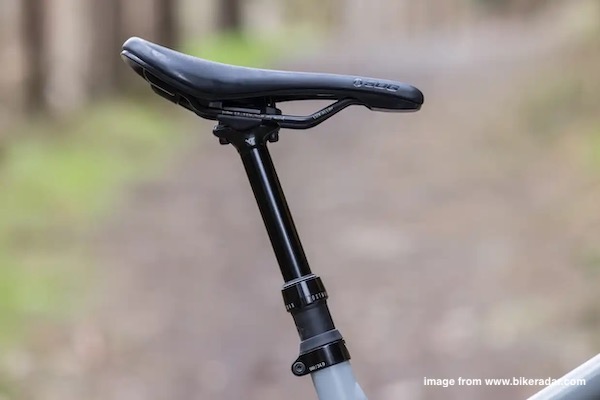
A dropper seatpost enables you to lower your saddle to get it out of the way when descending, ensuring you can move your weight back more easily on steep, technical terrain.A telescopic section of the seatpost can be moved up and down, and locked in position.
Most dropper posts enable you to lower your saddle by between 125mm and 170mm, while outliers start at 100mm and go as high as 210mm.
For a dropper post to work, there needs to be sufficient space in the frame’s seat tube. This is particularly an issue with smaller frame sizes, which often have shorter-travel dropper posts as a result.
Almost all higher-spec mountain bikes now come with a dropper seatpost and they’re trickling down to budget mountain bikes as well, increasing the capability of more affordable machines.
Some gravel bikes now come specced with a gravel dropper post too, and even more have a spare port in the frame’s down tube to enable internal routing of a dropper cable. The UCI also allows the use of dropper posts in road races.